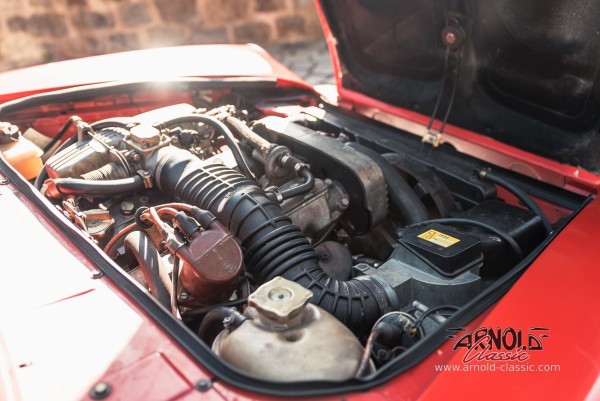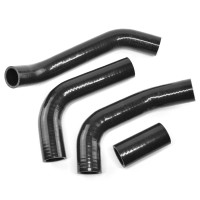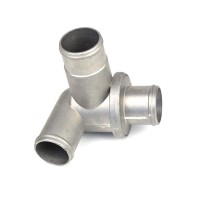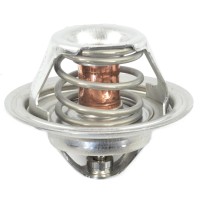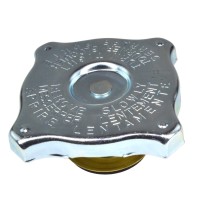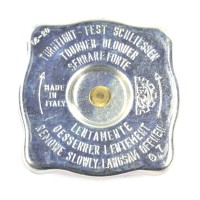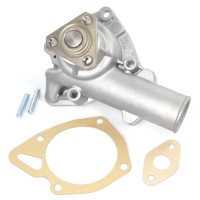Why Your Classic Car Overheats And How to Fix It
Classic cars offer a driving experience that’s full of character—but they weren’t built for modern-day traffic or long summer heatwaves. Overheating can quickly turn a smooth ride into a stressful stop. And while this issue is common, it’s also highly preventable.
In this article, we’ll explore why classic cars overheat and which specific components can help keep engine temperatures under control. From radiators and thermostats to fan upgrades and timing checks, we’ll walk you through effective solutions that work—especially for Fiat models.
Why Do Classic Cars Overheat?
1. Outdated Cooling Systems
Classic cars were designed for the driving conditions of their time, which differ significantly from today's traffic patterns and speeds. Their cooling systems may not cope well with modern demands.
2. Clogged or Aging Radiators
Over time, radiators can accumulate rust and debris, hindering coolant flow and heat dissipation.
3. Thermostat or Water Pump Failure
A malfunctioning thermostat can prevent proper coolant circulation, while a failing water pump can't effectively move coolant through the system.
4. Worn Belts and Hoses
Aging belts and hoses can crack or leak, leading to coolant loss and reduced system efficiency.
5. Insufficient Airflow
Mechanical fans may not provide adequate airflow at low speeds or during idling, especially in warm weather.
How Can You Prevent It?
1. Upgrade the Radiator
Installing a high-efficiency or aluminum radiator can improve cooling performance, particularly in warmer climates.
2. Install an Electric Fan
Electric fans offer consistent airflow regardless of engine speed, aiding in temperature control during traffic or idling.
3. Replace Belts, Hoses, and Thermostats Regularly
Routine inspection and replacement of these components can prevent unexpected failures and maintain cooling efficiency.
4. Use the Right Coolant Mixture
Modern coolants with appropriate additives can enhance heat transfer and protect against corrosion.
5. Check Ignition Timing
Proper ignition timing ensures optimal engine performance and can prevent overheating due to inefficient combustion.
Which Parts Actually Help?
- Radiators
Upgrading to a modern radiator can significantly enhance cooling capacity. - Thermostats
Ensuring the thermostat functions correctly is vital for regulating engine temperature. - Water Pumps
A reliable water pump is essential for maintaining coolant circulation. - Cooling Hoses & Belts
Replacing old hoses and belts can prevent leaks and maintain system integrity. - Electric Fans
Adding an electric fan can provide additional cooling support, especially in stop-and-go traffic. - Coolant Expansion Tanks
These tanks help manage coolant overflow and maintain proper pressure within the system.
Other Factors to Watch For
In some cases, the cause of overheating isn’t in the usual spots. Here are a few extra checks that can make a big difference:
1. Radiator Cap Pressure
A weak or worn-out radiator cap can lower the pressure in your system, reducing its ability to handle high temperatures. Consider upgrading to a higher-rated cap for better performance.
2. Head Gasket Symptoms
A failing head gasket can let coolant leak into the engine or oil system, leading to overheating and more serious damage. Watch for signs like milky oil, loss of coolant with no visible leak, or steam from the exhaust.
3. Exhaust Wrap
Wrapping exhaust headers and pipes helps reduce under-hood temperatures by keeping heat inside the exhaust system. It’s a small upgrade that can support overall engine cooling—especially useful on modified or performance-tuned classics.
Conclusion
Overheating is one of the most common challenges classic car owners face—but it’s also one of the easiest to prevent. With regular checks, the right upgrades, and a few smart additions, your Fiat can handle the heat with confidence.
Want to keep your classic Fiat running cool and stress-free this summer?
Check out the related products below to help your classic stay cool.

